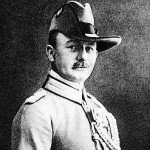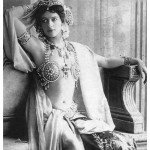
It is with good reason that the conflict of 1914-18 is considered the first ‘world war’ in human history. Though the bulk of fighting took place on the Western and Eastern Fronts, World War I was not confined to Europe. Because it was fought by empires rather than nations, the war was exported around the globe, to places largely unaffected by the tensions in Europe. There were battles and skirmishes on all four corners of the African continent; in parts of Asia; and on remote Pacific islands and atolls. Fighting broke out in some remote or unusual places, like India, Chile, the Falkland Islands and Mount Kilimanjaro. By late 1918, hostile action had occurred in more than 40 countries across four different continents. More than 100 nations issued declarations of war between July 1914 and November 1918. Almost 45 million men would don a uniform during this same period.
The first aggressive action of the war was Austria-Hungary’s invasion of Serbia in late July 1914. As Austrian artillery began bombarding the Serbian capital Belgrade, more than a quarter-million of the empire’s troops mobilised for an invasion. Austria-Hungary’s army had several advantages: it was much larger, better equipped and armed than the enemy. But many of Serbia’s officers and men were veterans of the two Balkan Wars; they had more recent and more extensive battle experience than their Austro-Hungarian counterparts. Vienna launched a full scale invasion of Serbia from the west, in order to avoid massed Serb defences along the northern border. But the terrain in western Serbia was hilly and undulating, which slowed the Austro-Hungarian advance. Serb divisions were rushed to the area, where they succeeded in repelling the invasion. The Austro-Hungarians were defeated at the Battle of Cer (August 1914) and the Battle of Kolubara (December 1914), and were forced to reassess their strategy. Vienna’s optimistic forecast that Serbia could be overrun within a matter of weeks had been shot down. Fighting in the area would rage until late 1915, when Serbia was finally conquered.
“In the circumstances [of stalemate in western Europe] combatants, not surprisingly, reached about for different strategies, seeking to attack a weak point instead. Operations in an area where the enemy’s main strength was not to be found would hardly be decisive, but they would sow disorganisation, might knock out an ally and open new paths to victory. Both sides tried this, though both hesitated to weaken their main lines to concentrate on less important ones. Leaders were divided – was it wise to divide forces, divert troops, say to Turkey, when the Germans were at Noyon?”
Marc Ferro, historian
Some of the earliest fighting of the war occurred in the colonies, chiefly because they had no large forces to mobilise so could take action quickly. In August 1914 a small New Zealand force invaded Western Samoa, a German colony since 1900; they found the island undefended and quickly arrested the German contingent. A company of Australian troops moved on German New Guinea, or Kaiserwilhelmland, where they found barely 200 German soldiers and policemen, who surrendered without much resistance. Several small islands occupied by Germany – including Micronesia, the Caroline Islands, the Marshall Islands and the Marianas – all quickly fell into Allied hands. The Germans abandoned their naval contingent in Shandong province, China, fearing an attack from Japan. Their ships sailed across the Pacific, shelling and harassing British and French positions along the way. One German vessel, the cruiser SMS Emden, remained in the area and attacked Allied ships in India, Malaya and south-east Asia. The Emden was defeated in battle by an Australian ship, HMAS Sydney, in November 1914.

The African continent was another location where German, British and French colonies existed in close proximity – and quickly engaged in fighting. In western Africa, the German colony of Togoland was defended by just 650 native policemen, commanded by a dozen Germans; it was quickly forced to surrender and occupied by Allied colonial forces. German Kamerun (Cameroon) was also lightly defended and quickly overrun. The situation was different in German South-West Africa (Namibia) and German East Africa (Tanzania), where there were several thousand German and native soldiers, along with a sizeable population of German settlers who could act as reservists. A large force from South Africa (then a British colony) entered German South-West Africa in early 1915; after five months of skirmishes they captured the capital, Windhoek. In German East Africa, a skilled German regiment led by Colonel von Lettow-Vorbeck battled with British and colonial forces for the duration of the war. Von Lettow-Vorbeck’s guerrilla brigade was never captured nor defeated in battle, and did not surrender until three days after the November 1918 armistice. More than 10,000 British, South African and Indian soldiers died in the struggle to apprehend von Lettow-Vorbeck’s men and secure control of German East Africa.

The war was also fought in the Middle East, where Allied troops wrestled with the Ottoman army for control of Palestine and the Suez Canal. The Germans encouraged their Ottoman allies to advance into the Sinai Peninsula in eastern Egypt, then move west to the Suez. The objective was to set up Ottoman strongholds along the canal; from these fortified positions the Turks and Germans could bombard Allied ships passing through the Suez. The Allied troops in the region were mainly British and British colonials (Australians, New Zealanders, Indians and small contingents from Hong Kong and Singapore). Through 1915 and 1916 a series of successful battles repelled Ottoman movement toward the Suez, then drove them back east across the Sinai. By 1917 the fighting had moved into Palestine, where there were major battles at Gaza and Beersheba. The Ottomans were driven further north through 1918, pushed back to the borders of modern-day Turkey. The Middle Eastern theatre was a successful one for the Allies, fought in trying conditions in inhospitable terrain. Not only did it secure the Suez Canal, it also led to a post-war British mandate in the region and the creation of modern nation-states like Israel, Jordan and Syria.

World War I was not only fought on the frontline. Espionage and covert agents were employed by all major combatant nations, to gain intelligence about enemy plans and activities. Probably the most famous spy was the Dutch exotic dancer Margaretha Zelle, better known as ‘Mata Hari’, who was shot by the British in 1917 for passing information to Berlin. London also maintained a broad network of spies, mainly in the Middle East and within Russia. In Britain, 11 people were court-martialled and convicted under the Defence of the Realm Act, for passing secrets to Germany. All were executed by firing squad at the Tower of London. German spies even operated in the United States before Washington’s declaration of war. In July 1916, unidentified German agents landed on Black Tom Island in New York, where more than a million tons of munitions were stored, waiting for shipment to Britain and France. They ignited the munitions, triggering an explosion that rocked the city, causing $US20 million in damage and killing seven people. There were several other attempts to sabotage American railways or shipments to Europe, some successful and some not. One plan aimed at infecting European-bound horses, mules and cattle with infectious diseases like anthrax and glanders.

1. World War I was fought in many theatres outside continental Europe, chiefly in the colonies of European nations.
2. The first significant fighting was in the Balkans, where Austro-Hungarian forces took months to overrun Serbia.
3. Small contingents of German colonials were also displaced by British and Allied forces in Asia and the Pacific.
4. A German militia in eastern Africa, led by Lettow-Vorbeck, provided staunch resistance until the end of the war.
5. British imperial forces were also deployed in sizeable numbers in the Middle East, where they struggled against the Ottomans for control of the Suez Canal and other important positions.
© Alpha History 2014. Content on this page may not be republished or distributed without permission. For more information please refer to our Terms of Use.
This page was written by Jennifer Llewellyn, Jim Southey and Steve Thompson. To reference this page, use the following citation:
J. Llewellyn et al, “A true world war” at Alpha History, https://alphahistory.com/worldwar1/world-war/, 2014, accessed [date of last access].
